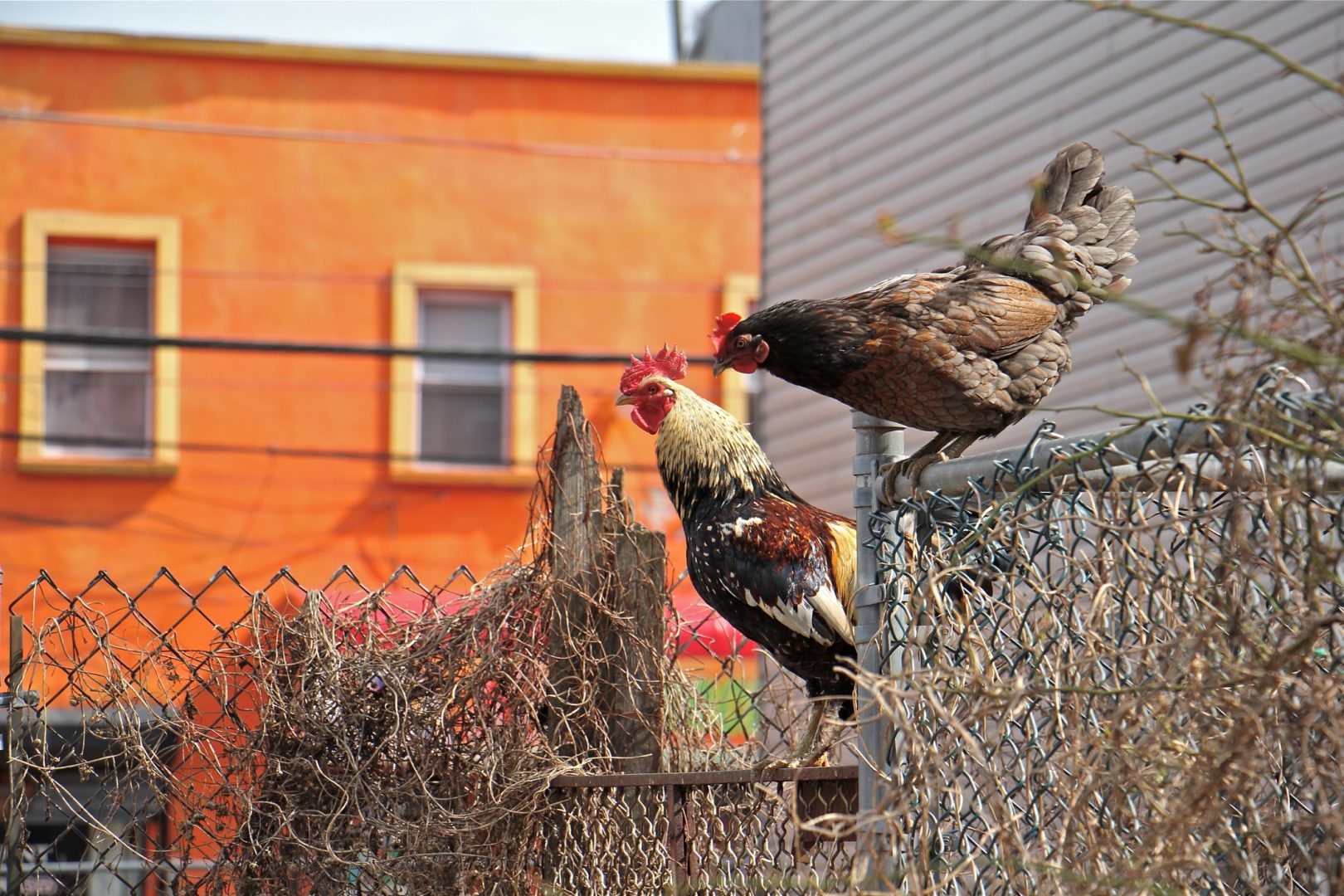
Chickens leave their enclosure at Dauphin and Waterloo streets. (Emma Lee/WHYY)

Chickens leave their enclosure at Dauphin and Waterloo streets. (Emma Lee/WHYY)

Chickens leave their enclosure at Dauphin and Waterloo streets. (Emma Lee/WHYY)
What you should know
» Coronavirus facts & FAQ
» Day-by-day look at coronavirus disease cases in Pa.
» What the governor’s stay-at-home order means
Pennsylvania’s latest climate report projects chicken farms to double by 2050.
The Department of Environmental Protection’s updated Climate Change Impacts Assessment predicts Pennsylvania will continue to get hotter and wetter with temperatures expected to rise 2.7 degrees Fahrenheit by 2050, based on 2000 figures. Precipitation in the state is expected to increase 8 to 12% in that same time period. All of this makes the state more favorable to raising chickens.
The DEP released the update to its 2015 climate impact assessment on Monday, which is conducted for the state by the Environmental and Natural Resources Institute at Penn State.
“Effective decision-making for Pennsylvania’s future is decision-making that accounts for the changes that are likely to happen if we don’t reduce greenhouse gas emissions and meet the need to manage them,” said DEP Secretary Patrick McDonnell. “The Climate Impacts Assessment presents a detailed picture of these changes in several key areas.”
This is the third update to the original report mandated by state law and published in 2009.
This version of the report focuses on the impacts to livestock, watershed management and infrastructure.
Poultry plants are expected to double by 2050 as the southern states become too hot to support chicken farms. Hogs, pigs and beef cattle could also increase. Dairy farms are expected to shift from the southeast region to the northwest parts of the state due to rising temperatures.
The combination of the increase in livestock, especially poultry, along with rising rainfalls could lead to more pollution run-off into the Chesapeake and Delaware rivers.
The report stresses the need for upgrades to planning for stormwater management.
The assessment also warns of coastal storm surges in southeastern Pennsylvania damaging infrastructure and increased risks of landslides in southwestern Pennsylvania.
Average yearly rainfall in the state has risen 10% and average temperatures have climbed by 2 degrees Fahrenheit since 1901.
Gov. Tom Wolf announced in 2019 a goal to cut greenhouse gas emissions 80 percent by 2050.
WHYY is the leading public media station serving the Philadelphia region, including Delaware, South Jersey and Pennsylvania. This story originally appeared on WHYY.org.

A collection of interviews, photos, and music videos, featuring local musicians who have stopped by the WITF performance studio to share a little discussion and sound. Produced by WITF’s Joe Ulrich.
The days of journalism’s one-way street of simply producing stories for the public have long been over. Now, it’s time to find better ways to interact with you and ensure we meet your high standards of what a credible media organization should be.